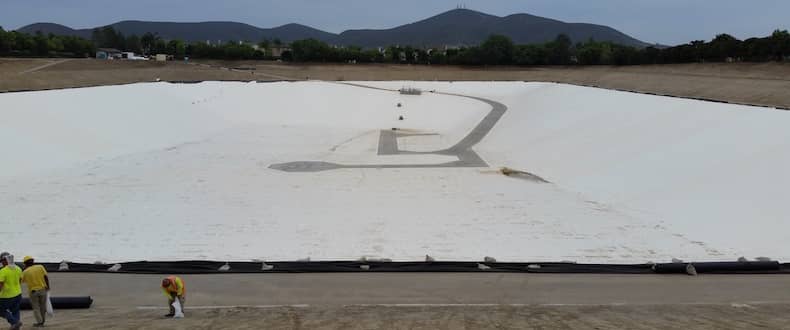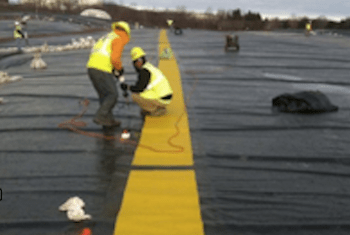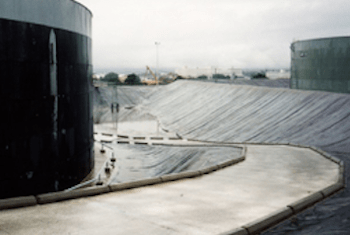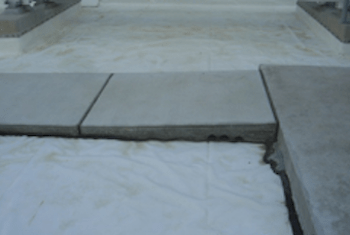 Geomembranes are the superior choice for containing valued substances (drinking water, petrochemical products, etc.) and for protecting the environment from harmful substances (wastewater, petrochemicals, etc.). But how do you protect your geomembrane liner?
Geomembranes are the superior choice for containing valued substances (drinking water, petrochemical products, etc.) and for protecting the environment from harmful substances (wastewater, petrochemicals, etc.). But how do you protect your geomembrane liner?
A failed liner will, obviously, not provide its intended service. Geomembranes can be compromised by mechanical events (dropped tools, rocks in boots, etc.) by chemical attack (hydrocarbons, high or low pH, etc.) and by weathering (UV, harsh weather).
 Burying the liner for its protection is often the first choice. A typical lift of 12” of soil or aggregate can go a long way in preventing mechanical or weathering damage, though not damage from chemical attack. A cover layer has drawbacks though:
Burying the liner for its protection is often the first choice. A typical lift of 12” of soil or aggregate can go a long way in preventing mechanical or weathering damage, though not damage from chemical attack. A cover layer has drawbacks though:
- Protective soil makes it difficult, if not impossible, to inspect the liner
- It can be challenging to maintain a uniform thickness of cover on a slope
- When containing environmentally unfriendly substances, a spill will contaminate the cover layer. This will require additional effort and cost to remediate.
It is possible to leave the liner exposed and take advantage of the benefits that an exposed geomembrane offers. Three items must be addressed in order to do so.
First, assuming the liner is chemically resistant to the contained substance, it must be able to resist mechanical and weathering damage. There are a number of geomembrane types available today which have excellent puncture, tear and weathering resistance. Some types of liners offer 20 or 30-year warranties in exposed applications. The geomembrane industry has a long track record of projects wherein the liner has been serviceable (exposed) for over 30 years. The liner used in the aeration basin at the Mammoth Cave National Park WWTP, for instance, has been in service for over 30 years:
Second, care must be taken to provide resistance to wind uplift. Proven methodologies for determining ballast plans with sand tubes are readily available (see Design of Geomembrane Anchorage Against Wind Action, J.P, Ghiroud & M.H. Gleason; Geosynthetics International 1999, Vol 6, No. 6 p.481).
Finally, provision should be made for access by personnel and vehicular traffic. The geomembrane industry offers pedestrian traffic mats that not only protect the liner but offer visual guidance and slip resistance as well.
 For vehicular traffic, the US Army Corp of Engineers has been using a concrete-drive detail for decades with good success.
For vehicular traffic, the US Army Corp of Engineers has been using a concrete-drive detail for decades with good success.
 It can be used for foot traffic as well.
It can be used for foot traffic as well.
 By choosing the right liner, you can be confident that it can be employed without cover protection and provide the client with a more serviceable installation.
By choosing the right liner, you can be confident that it can be employed without cover protection and provide the client with a more serviceable installation.
What are your thoughts on protecting geomembrane liners? Tell us about them in the comments!



